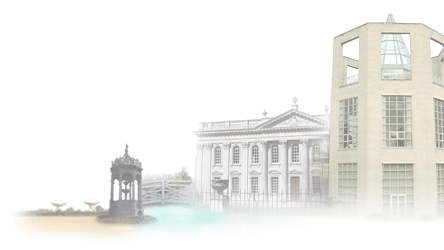A Cambridge perspective
on the digital world



August 2004
The iTunes Music Store has finally shown where the music industry is going, after several years of uncertainty. iTunes took up where Napster left off, and made it work in a way that satisfies everyone, including the lawyers.
Digital technology has ripped up the music industry and reinvented it in a different form. Ever since the CD appeared, digitisation has been a ticking time bomb under long-established practices which dictated how the purchase price of a disc was distributed among retailers, distributers, manufacturers, record producers and artists (who incidentally, received a fairly small percentage at the very end of the chain).
All this was based on the fact that records (whether CD or vinyl) could only be produced by expensive equipment in a capital-intensive factory, and needed to be physically shipped to users. It also relied on the fact that, although copies could be made, they didn't match the quality of the original. Digital technology smashed a gaping whole through both these assumptions. If I can make a digital copy that is identical to the original, and send it to my friends for free over the Internet, why should I ever pay for recorded music again?
For the past several years, the record industry has been working to defend and shore up legal agreements based on assumptions about recording technology that were, arguably, already obsolete. But there seemed no acceptable way forward, other than giving up the ghost and putting several major corporations, billions of dollars of investment and several thousand jobs on the line.
Other industries have been watching the music business carefully, because a similar digital dilemma is brewing elsewhere. If you can make digital copies of music, then why not - with the increasing availability of broadband and high-spec PCs - films? In different ways, digital technology is challenging the basic economic assumptions behind industries including (at the very least) media, telecommunications and finance. All have been experiencing their own version of 'Napsterisation'. News of a workable solution in the music business is therefore of more than local interest.
The iTunes story shows that, for those trying to create businesses in the digital world, there is light at the end of the tunnel. Apple has created a service that people choose to use, and to pay for. People use iTunes because it is legal, convenient and cool. The original Napster was closed down by legal action, but this only ever seemed like a temporary shoring up of the barricades: the digital waves would crash through eventually. Apple has relieved the pressure by creating a legal service that keeps everybody happy.
How did Apple do it? Their formula for success includes three carefully crafted elements.
Most visible is the iPod. It wasn't the first MP3 player, but Apple created the device everyone wanted to own. A combination of styling, ease of use and attention to detail mean that iPod has taken the market by storm.
Equally important is the iTunes application, developed first for the Apple Macintosh and later ported to the PC. Again, it wasn't the first, but it cornered the market in style and ease of use. As with the Macintosh user interface, Apple worked hard to hide all the technical details beneath the surface. iTunes is designed for those who simply want their software to work - and to have a little style about it. iTunes lets you download and manage your own library of music, on your PC and on your iPod, without knowing a whisker more about the technicalities than you actually have to.
The final link in the chain was the iTunes Music Store: an online service that works with the iTunes application and lets you download - and pay for - the music that you want, track by track and album by album.
Crucially important to the Music Store's success is Apple's policy on what you are buying. With a physical disc, it's clear. But what have you paid for when you've bought a collection of bits? Not the right to do anything you want with it, which would include the right to distribute a million copies over the Internet. On the other hand, limiting use to a single copy on a single PC seems unduly restrictive, to most users at least.
Apple's Fairplay Digital Rights Management (DRM) system steers a middle course. Having bought a track, you can do what seems reasonable for personal use: use it on your PC, transfer it to a new PC if you get one, download it to your iPod, and even burn it onto a CD.
Apple has also chosen its price carefully: 99c per track in the US, 99 Eurocents in Europe (79p in the UK): just low enough for users to accept it (with a little grumbling), and just high enough for the record labels to sign up (with equivalent protests at being robbed). Conveniently, Apple could offer the recording companies a self-contained community of Mac users to try the service out on: big enough to be a real test, but small enough that it wouldn't be a complete disaster if it failed. But it worked, and the mass market of PC users was brought on board too.
If there is a single secret to why iTunes is a success, it is Apple's policy on digital rights and pricing, which steers a course that has won over all sides. Getting there wasn't easy: Apple CEO Steve Jobs spent a lot of time wooing his opposite numbers at record companies, and Apple Europe has only recently reached agreement with independent record labels, who thought they were getting a raw deal compared with the majors. Apple's persistence has paid off.
But Apple would not have had a chance to even try out its approach to pricing without the earlier success of iPod and the iTunes application. Taken together, the magic triangle of product, application and service created the conditions for success.
What does this say about what it takes to succeed in the digital world? Worldwide, the closest parallel to what Apple has done with iTunes is NTT DoCoMo's i-mode service, which signed up a quarter of the Japanese population in just four years. i-mode delivers multimedia services to mobile phones in Japan, and its huge success contrasts sharply with the slow takeup of WAP (superficially a similar service) in Europe.
NTT DoCoMo is a very different company from Apple, but its approach was startlingly similar: design for extreme ease of use by non-technical people, pay close attention to user interfaces and products (in this case mobile handsets, made by independent manufacturers, but conforming to tight specifications laid down by DoCoMo), and get the pricing right. In particular, don't take all the money for yourself, but share it with content providers in a way they consider fair. Like Apple, DoCoMo set up a system of online payment and billing, and shared what it collected with providers of content in a way that persuaded them to participate.
What does it take to succeed - other than coming up with a name that starts with a lower case 'i'? The elements of a successful formula are increasingly clear.
Meanwhile, iTunes itself goes from strength to strength. Recently announced was co-operation with Motorola to allow iTunes users to transfer music to a new version of the software on their mobile phone. The mobile player will be the standard music application on all Motorola's phones.
iTunes shows every sign of creating the same kind of 'bandwagon effect' as i-mode. It has defined a way forward for the music industry that will set the pattern for years to come. And it has shown how to create digital services that work - commercially and in every other way. The lessons from this are relevant far beyond the music business.
©2004 Mediation Technology
